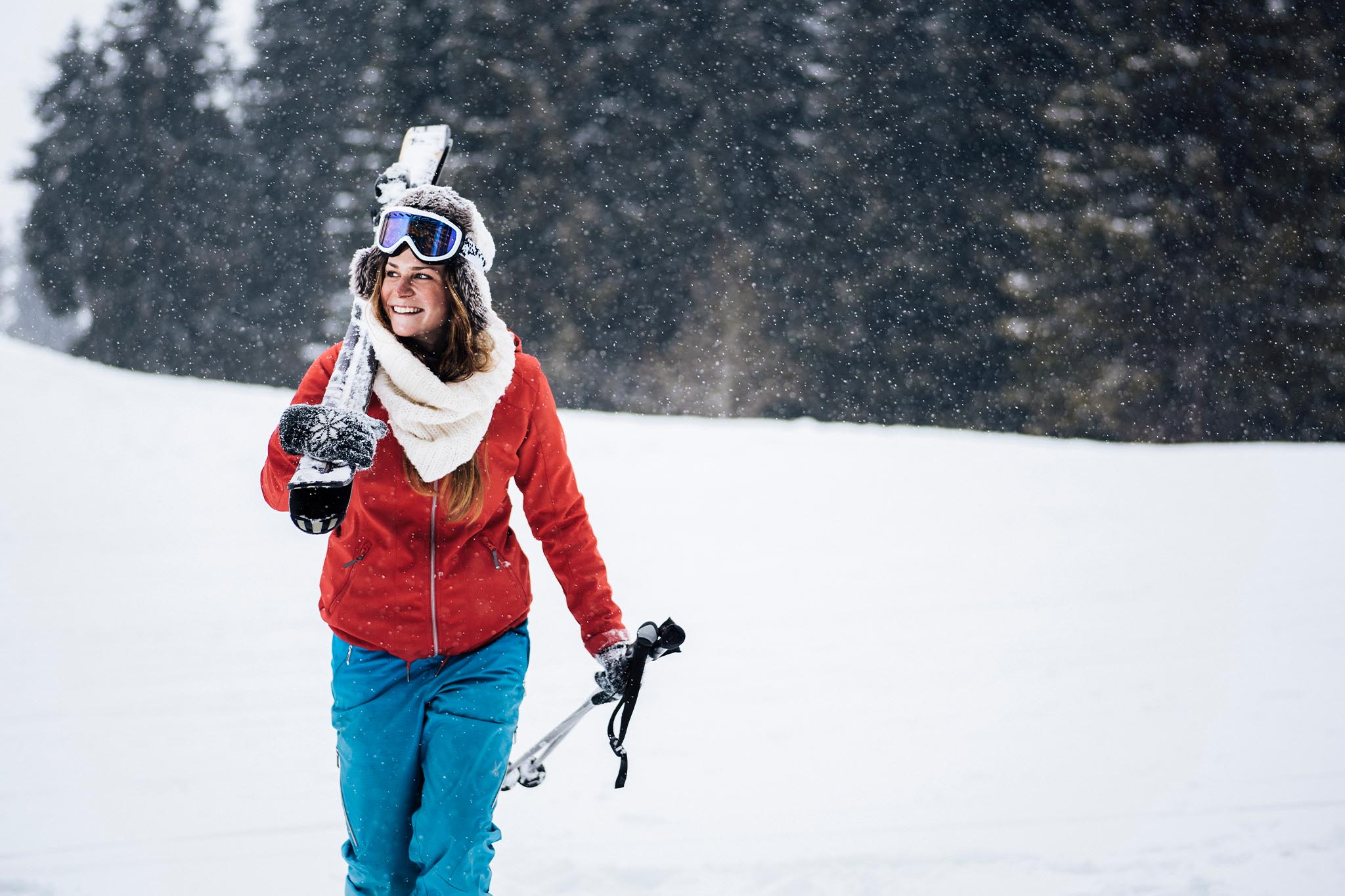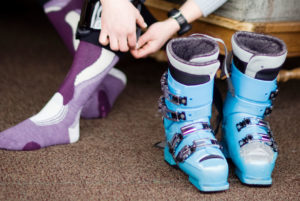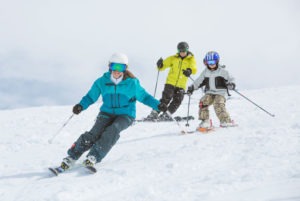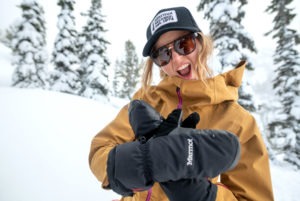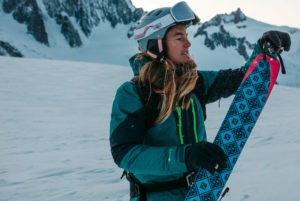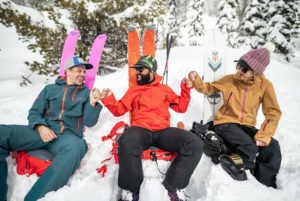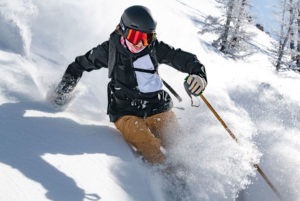Whether you are headed to the mountain for a spring slush session or you are bravely skiing on the coldest days, deciding what to wear while skiing can be intimidating. Having the right or wrong gear, the way you layer it, and the quality of your ski clothing can make a world of difference.
When you are first starting out, it can be difficult to determine just what you will need to wear on the slopes. It can be easy to think, “Well, I bought the most expensive jacket, so I’m good. Right?” If this jacket is expensive because of its heavy insulation, you will want to leave it behind for a 40-degree melty March day. Instead, you would want to consider a men’s or women’s shell-style coat – and we will get into layering later. So, ultimately having the best gear won’t make a difference if you don’t know how to wear it!
The importance of knowing what to wear skiing is essential for everyone, whether you are just starting out, or you have been skiing for years. Learn how to protect yourself in harsh winter conditions, what to wear to stay dry on powdery runs, and keep comfortable while skiing.
Let’s get started!
The Importance of Layering
By layering your clothing, you’re more likely to keep your body dry while skiing, prevent sweat from potentially saturating more than one layer – causing you to feel cold – and you’ll gain the freedom to customize your layers as the day warms up or cools down.
There are a few things to consider, to perfect the art of layering:
Base Layer
Base Layer, or the layer of ski clothing you wear that touches your skin, a good base layer should have the capability to wick away sweat. Aside from adding warmth and wicking sweat, a good base layer should be comfortable enough for lots of movement while skiing.
When you are considering base layers, think both about the top and the bottom. A base layer top tends to be a tight-fitting sleeved shirt so as not to add bulk or reduce mobility. Base bottoms are the pants that lay below your ski pants. For bottoms to wear while skiing, this will vary from person to person. Some skiers are very active and stay warm easily, prompting them to wear a thin, active pick – shop women’s base layers. Whereas, for those that find themselves cold no matter how much they move, a thicker, warmer choice will be more comfortable.
Synthetic base layers, usually made from nylon or polyester, are typically the more budget friendly options. They can provide ample comfort, both soft and lightweight, and are great to wear skiing to wick moisture. Merino wool, on the other hand, is a great choice to wear skiing on cold days on the slopes.
For optimal performance, you will want to invest in quality choices to wear while skiing. If you are new to the sport and haven’t yet collected your men’s or women’s ski clothing or gear, wear a mix of athletic pieces as your first layer. Focus on items that wick moisture, provide some warmth, and give you a solid range of motion.
For your socks, it’s best to invest in a quality pair made specifically for skiing, rather than wearing double layers of standard socks. As tempting as wearing two layers of socks might sound for warmth, it will likely cause your feet to sweat, making them colder in the long run. Ski specific socks are a must-have on the mountain.
Mid Layers
For additional insulation on cold days or under shell ski jackets, mid-layers are a necessity to wear while skiing. Depending on the weather, how warm or cold you run, and how active you find yourself on the mountain, a mid-layer can look very different each time.
From men’s and women’s fleece to hoodies, thin down jackets, vests, the interior of a 3 in 1 jacket, and more, your mid-layer will likely change the most day to day. If you have chosen a shell jacket to wear while skiing, your mid-layer will be considered your insulation, so make sure it’s insulated enough to keep you warm but still provides enough mobility without adding too much bulk.
In spring riding conditions or on warmer days, you may even skip a mid-layer, especially if your jacket has a lot of insulation. On the coldest January days, even with a high insulation coat, you will want to wear an insulated pick or a thick fleece to keep your core warm. Most often, this is the layer you will remove and stow away as the day warms, so consider how easily you can store this piece in a pack on the mountain. Alternatively, can you unbutton or unzip it to allow for more airflow.
Outer Layer
Your outer layer is most often a ski jacket. Whether you choose to wear a shell or insulated jacket while skiing, this is an important piece. Your coat is responsible for protecting you from wind, rain, snow, and cold, so you will not want just any old jacket on the mountain. Consider spending the most on your outer layer if you are sticking to a budget.
A quality outer layer should be windproof and waterproof – the basis of a technical shell. Gore-Tex will be your best bet here! Breathability is also another factor you may want to look into when investing in decent outerwear, it shouldn’t feel stuffy – underarm venting can help here as well.
For many, wearing a skiing jacket with at least some targeted insulation is a great place to start. As you find your preference and begin skiing different times of the year and other locations, you will want to consider a highly insulated coat and a technical shell to add to your collection of ski clothing.
When it comes to ski pants, many styles are shells with some targeted insulation. On very chilly days and for self-proclaimed freeze babies, you will want to consider a fully insulated pair. But remember, skiing is an active sport, so you will want to wear something that allows you to move comfortably without overheating.
Ski Clothing Accessories
Now that the core of your body is covered, don’t forget the importance of quality ski clothing accessories! When deciding on what to wear when skiing, you will want to determine whether or not you’d like to ski with a ski helmet or a beanie – most people find it too warm to wear both. We recommend a helmet for safety!
For individuals who have a hard time keeping their hands warm, it helps to wear a thin pair of layering gloves underneath insulated, waterproof mittens. Otherwise, gloves or mittens come down to preference. Shop kids ski glove options!
For extra warmth and comfort, adding face masks, neck gaiters, or a beanie can help you stay warm. Lastly, it helps to invest in a decent pair of ski goggles to ensure that you have quality vision when skiing and that your eyes stay protected.
The Wrap Up
Don’t ruin your ski trip with improper clothing, deciding what to wear skiing can make or break your day on the slopes! Layer up, grab your men’s or women’s skis, get your pass, and get going in comfort. At the end of the day, it helps to identify what you need beforehand so you can ride feeling confident that it will protect you.


